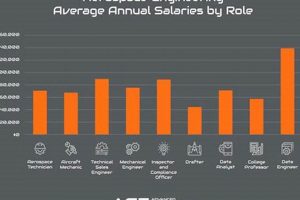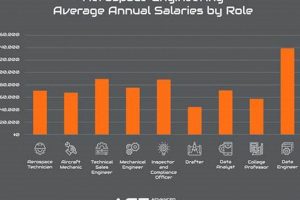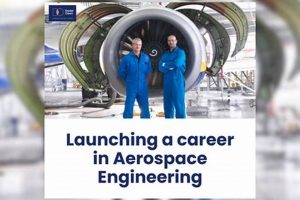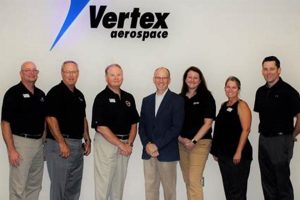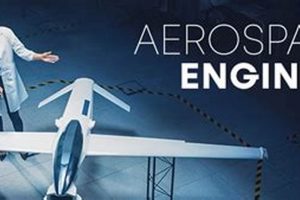Securing employment in the field of aerospace engineering necessitates a strategic approach encompassing education, skill development, and targeted job searching. This process involves acquiring a relevant academic background, cultivating necessary technical proficiencies, and effectively presenting oneself to potential employers. Preparation for this career path is a multifaceted endeavor.
The attainment of a position in this competitive sector offers significant career rewards, including opportunities to contribute to cutting-edge technological advancements and participate in challenging, impactful projects. Historically, successful candidates have demonstrated a commitment to continuous learning and a proactive approach to professional development, consistently seeking opportunities to expand their expertise and network with industry professionals. This career path has propelled numerous individuals to leadership roles in both research and development and management.
A detailed examination of the key components involved in pursuing and achieving success in aerospace engineering employment will follow, covering educational pathways, essential skills, and effective strategies for navigating the job market.
Strategies for Aerospace Engineering Employment
The following recommendations offer guidance on effectively navigating the job market within the aerospace engineering sector. These strategies encompass academic preparation, skill enhancement, and networking techniques designed to maximize career prospects.
Tip 1: Academic Foundation: A Bachelor’s degree in Aerospace Engineering or a closely related field is fundamental. Advanced degrees, such as a Master’s or Doctorate, can significantly enhance career opportunities, particularly in research and development roles. Relevant coursework should include aerodynamics, propulsion, structures, and control systems.
Tip 2: Technical Proficiency: Proficiency in industry-standard software is critical. Examples include CAD (Computer-Aided Design) software like CATIA or SolidWorks, CAE (Computer-Aided Engineering) software like ANSYS or ABAQUS, and programming languages like MATLAB or Python. Familiarity with these tools enables efficient design, analysis, and simulation tasks.
Tip 3: Internships and Co-ops: Gaining practical experience through internships or cooperative education programs is highly valuable. These experiences provide exposure to real-world engineering challenges, allowing for the application of theoretical knowledge and the development of professional skills. Seek opportunities at aerospace companies, government agencies, or research institutions.
Tip 4: Networking: Building a professional network can significantly aid in the job search. Attend industry conferences, join professional organizations such as the American Institute of Aeronautics and Astronautics (AIAA), and connect with engineers and recruiters through online platforms like LinkedIn. Networking facilitates the discovery of job openings and provides valuable insights into industry trends.
Tip 5: Project Portfolio: Developing a portfolio showcasing engineering projects and accomplishments can effectively demonstrate skills and experience to potential employers. Include details of projects completed during academic coursework, internships, or personal endeavors. Highlight the challenges faced, the solutions implemented, and the outcomes achieved.
Tip 6: Resume Optimization: A well-crafted resume is essential for making a strong first impression. Tailor the resume to each specific job application, emphasizing relevant skills and experience. Quantify achievements whenever possible, using metrics to demonstrate impact. Proofread carefully to ensure accuracy and clarity.
Tip 7: Communication Skills: Strong written and verbal communication skills are crucial for effective collaboration and project execution. Practice presenting technical information clearly and concisely, both in written reports and oral presentations. The ability to communicate effectively with colleagues, clients, and stakeholders is essential for career success.
Adherence to these strategies will enhance the prospects of securing a fulfilling and impactful career within the aerospace engineering domain. Continuous professional development and a proactive approach to career management are essential for long-term success.
The next section will address the importance of continuous learning and adaptation in the ever-evolving field of aerospace engineering.
1. Education
A foundational component of a successful pursuit of aerospace engineering employment is robust formal education. The acquisition of theoretical knowledge and practical skills through a Bachelor of Science in Aerospace Engineering, or a closely related field such as Mechanical Engineering with an aerospace concentration, directly correlates with increased job prospects. This education provides the fundamental understanding of aerodynamics, propulsion, structures, and control systems essential for performing core engineering tasks. For example, a solid grasp of fluid dynamics, acquired through coursework, is critical for designing efficient aircraft wings or optimizing rocket nozzle performance.
Further educational attainment, such as a Master’s or Doctoral degree, often opens doors to specialized roles in research and development or allows for more in-depth study of specific aerospace sub-disciplines. These advanced degrees signal a higher level of expertise and dedication, frequently preferred by employers seeking candidates for complex projects. Universities with strong aerospace engineering programs often have established relationships with industry partners, providing students with internship and research opportunities that further enhance their qualifications. A real-world example is the collaboration between MIT’s Department of Aeronautics and Astronautics and NASA, which allows students to participate in cutting-edge research, directly translating academic knowledge into practical applications.
In conclusion, education serves as the bedrock upon which an aerospace engineering career is built. While practical experience and other factors certainly play a role, a strong educational foundation provides the necessary theoretical understanding, analytical skills, and problem-solving abilities required to succeed in this demanding field. Continuous learning and adaptation through further education or professional development are crucial for maintaining competitiveness and addressing the evolving challenges within the aerospace industry.
2. Skills
The possession of specific skills is a critical determinant in successfully navigating the path to aerospace engineering employment. Demonstrable competence in relevant areas significantly enhances a candidate’s attractiveness to potential employers and directly impacts the likelihood of securing a desired position. These skills extend beyond theoretical knowledge acquired through formal education.
- Technical Proficiency with Industry Software
Mastering industry-standard software is indispensable. Competency in Computer-Aided Design (CAD) programs, such as CATIA or SolidWorks, enables the creation of detailed engineering designs. Proficiency in Computer-Aided Engineering (CAE) software, like ANSYS or ABAQUS, facilitates the analysis and simulation of structural and fluid behavior. Programming skills in languages like MATLAB or Python are essential for developing custom tools and analyzing large datasets. For example, an engineer designing a composite wing must be proficient in CAD software to create the geometry, CAE software to analyze its structural integrity under various loads, and potentially MATLAB to develop scripts for processing simulation results. Lack of these skills can be a significant barrier to entry.
- Problem-Solving and Analytical Abilities
Aerospace engineering inherently involves complex problems requiring strong analytical and problem-solving skills. These abilities are crucial for identifying the root cause of issues, developing effective solutions, and making data-driven decisions. For example, troubleshooting unexpected vibrations in an aircraft engine necessitates a systematic approach involving data analysis, experimentation, and the application of engineering principles to identify and rectify the problem. Employers actively seek candidates who can demonstrate a history of successfully resolving technical challenges.
- Communication and Teamwork Skills
Effective communication is vital for collaborating with engineers from different disciplines, presenting technical findings to stakeholders, and documenting design processes. Aerospace projects are inherently collaborative, requiring engineers to work effectively within teams. This includes actively listening to diverse perspectives, clearly articulating ideas, and contributing to a cohesive project outcome. For example, coordinating the design of an aircraft control system involves close collaboration between aerodynamics, structures, and control engineers. Deficiencies in these skills can hinder project progress and team dynamics.
- Hands-on Experience and Practical Application
Demonstrated practical experience complements theoretical knowledge, reinforcing a candidate’s understanding of engineering principles and processes. This can be acquired through internships, co-op programs, or personal projects involving the design, fabrication, or testing of aerospace components. For example, building and testing a small-scale wind tunnel model provides hands-on experience in aerodynamics and instrumentation, complementing classroom learning. Practical experience demonstrates a candidate’s ability to apply theoretical knowledge to real-world scenarios, increasing their value to potential employers.
These skills collectively contribute to a comprehensive skillset that aerospace engineering employers actively seek. While academic qualifications provide a foundation, demonstrated proficiency in industry-standard software, analytical problem-solving, effective communication, and practical application are crucial for securing and succeeding in aerospace engineering roles. The continuous development and refinement of these skills are essential for maintaining competitiveness and advancing within the field.
3. Experience
Practical experience constitutes a critical element in the pursuit of aerospace engineering employment. Demonstrated application of theoretical knowledge and acquired skills significantly enhances a candidate’s qualifications and competitiveness within the job market. Experience bridges the gap between academic learning and real-world engineering challenges, providing tangible evidence of a candidate’s capabilities.
- Internships and Co-operative Education Programs
Internships and co-op programs offer structured opportunities to gain practical experience within an aerospace engineering setting. These programs typically involve working on real-world projects under the supervision of experienced engineers. Examples include assisting in the design of aircraft components, analyzing flight test data, or developing simulation models. The value of these experiences lies in the exposure to industry practices, the development of professional skills, and the opportunity to network with potential employers. They also provide a realistic preview of the demands and expectations of an aerospace engineering career, aiding in informed career decision-making.
- Research Projects and Academic Involvement
Participation in research projects, either as part of academic coursework or extracurricular activities, provides valuable experience in applying engineering principles to address specific research questions. These projects may involve designing and building experimental setups, collecting and analyzing data, and presenting findings in written reports or conference presentations. Involvement in student engineering organizations, such as AIAA student chapters, further enhances practical skills through participation in design competitions or outreach activities. These experiences demonstrate initiative, technical competence, and the ability to work collaboratively on complex projects.
- Personal Engineering Projects and Hobbyist Activities
Independent engineering projects and hobbyist activities can also contribute to relevant experience. These projects demonstrate a passion for engineering and a willingness to pursue self-directed learning and skill development. Examples include building and flying model aircraft, designing and 3D-printing mechanical components, or developing software for aerospace applications. Documenting these projects with detailed descriptions, drawings, and code samples provides tangible evidence of a candidate’s technical abilities and problem-solving skills. Such projects can showcase a candidate’s creativity, resourcefulness, and commitment to lifelong learning.
- Military Service and Related Experience
For individuals with military service, relevant experience gained in aviation maintenance, flight operations, or related technical fields can be valuable assets in the aerospace engineering job market. Military training and experience often involve working with complex systems, adhering to strict safety protocols, and operating in demanding environments. Transferable skills, such as leadership, teamwork, and problem-solving, are highly valued by aerospace employers. Clearly articulating the relevance of military experience to specific aerospace engineering roles is crucial for effectively showcasing these skills to potential employers.
In summary, experience plays a pivotal role in securing aerospace engineering employment by providing tangible evidence of a candidate’s skills, knowledge, and abilities. Through internships, research projects, personal projects, and related activities, individuals can demonstrate their capacity to apply engineering principles, solve problems, and contribute to the advancement of the aerospace field. Emphasizing the relevance of these experiences in resumes, cover letters, and interviews is essential for effectively communicating one’s qualifications to potential employers and increasing the likelihood of securing a desired position.
4. Networking
Networking serves as a critical conduit within the complex process of obtaining aerospace engineering employment. Its significance stems from its ability to provide access to information, opportunities, and connections otherwise inaccessible through conventional job search methods. The cause-and-effect relationship is direct: proactive networking efforts demonstrably increase the likelihood of securing an aerospace engineering position. For example, attending industry conferences such as those hosted by the American Institute of Aeronautics and Astronautics (AIAA) allows aspiring engineers to engage with professionals, learn about upcoming projects, and potentially uncover unadvertised job openings. These interactions can lead to referrals, informational interviews, and ultimately, employment opportunities. The absence of networking can significantly impede job prospects, limiting exposure to available positions and valuable industry insights.
The practical significance of understanding the role of networking extends beyond simply finding job postings. It involves building relationships with individuals who can provide mentorship, offer career advice, and advocate on behalf of candidates. Consider a scenario where a recent graduate connects with a senior engineer at a target company through a professional association. The engineer, impressed by the graduate’s knowledge and enthusiasm, offers guidance on tailoring their resume and provides insights into the company’s hiring process. This inside knowledge can be a decisive advantage, allowing the candidate to present themselves more effectively and navigate the application process more successfully. Further, networking facilitates the cultivation of a professional reputation, which can be invaluable in a relatively small and specialized industry like aerospace engineering. Positive word-of-mouth referrals carry significant weight and can open doors that might otherwise remain closed.
In conclusion, networking is not merely a supplementary activity but an integral component of a comprehensive strategy for securing aerospace engineering employment. Its value lies in providing access to information, fostering mentorship relationships, and cultivating a positive professional reputation. While academic qualifications and technical skills are essential, networking provides the critical human element that can differentiate a candidate and significantly increase their chances of success. The challenge lies in actively cultivating and maintaining a professional network, requiring consistent effort and genuine engagement within the aerospace engineering community.
5. Portfolio
A well-structured portfolio directly influences success in securing aerospace engineering employment. The primary effect of a strong portfolio is demonstrating applied skills and practical experience to potential employers, going beyond the information conveyed by academic transcripts or resumes. It serves as tangible evidence of a candidate’s capabilities, showcasing the application of theoretical knowledge to real-world engineering challenges. Without a portfolio, candidates rely solely on descriptions of projects and responsibilities, a less compelling approach. For instance, a portfolio might include detailed documentation of a design project, including CAD models, simulation results, and performance analysis, allowing employers to assess the candidate’s proficiency in industry-standard tools and techniques.
The practical significance of understanding the portfolio’s importance lies in the ability to strategically curate its content. Candidates should focus on including projects that are relevant to the specific roles they are targeting, highlighting skills and experience that align with the employer’s needs. If seeking a position in aerodynamics, for example, the portfolio should emphasize projects involving wind tunnel testing, computational fluid dynamics, or aircraft design. Furthermore, the portfolio should be presented in a clear and professional manner, demonstrating attention to detail and effective communication skills. A haphazardly organized or poorly documented portfolio diminishes its impact, potentially undermining the candidate’s overall qualifications. Including details on the candidate’s role in the project, challenges faced, and solutions implemented will add more clarity about the contribution of the candidate.
In conclusion, a portfolio is not merely a collection of past projects; it is a strategic tool that can significantly enhance a candidate’s prospects in the aerospace engineering job market. The challenges in creating an effective portfolio lie in selecting relevant projects, documenting them thoroughly, and presenting them in a professional and compelling manner. Its impact is undeniable: a strong portfolio increases visibility, demonstrates practical competence, and provides a tangible representation of a candidate’s potential value to an employer, directly contributing to securing employment.
6. Resume
The resume serves as a foundational element in the process of acquiring aerospace engineering employment. It functions as the initial point of contact between a job seeker and a potential employer, providing a concise summary of qualifications, experience, and skills. Its impact is direct: a well-crafted resume increases the likelihood of securing an interview, while a poorly constructed one diminishes those prospects. The resume acts as a filter, determining whether an applicant advances in the selection process. For example, a resume highlighting relevant coursework, internship experience at a reputable aerospace company, and proficiency in industry-standard software such as CATIA will likely attract more attention than one lacking these elements.
Understanding the practical significance of the resume requires recognizing its role as a marketing document. It necessitates strategic tailoring to each specific job application, emphasizing the qualifications most relevant to the target position. This involves carefully analyzing the job description and incorporating keywords and phrases that align with the employer’s stated requirements. Furthermore, the resume should quantify accomplishments whenever possible, using metrics to demonstrate the impact of past work. For instance, stating “Reduced manufacturing costs by 15% through process optimization” provides more compelling evidence of skills than simply stating “Improved manufacturing processes.” Clarity, conciseness, and accuracy are paramount; a cluttered or error-filled resume creates a negative impression and undermines the applicant’s credibility. The resume is the door-opener.
In conclusion, the resume is not merely a historical record of past employment; it is a strategically constructed marketing tool designed to secure interviews and advance career prospects in aerospace engineering. The challenge lies in effectively showcasing qualifications, tailoring the content to specific job requirements, and presenting the information in a clear and compelling manner. Its impact is undeniable: a well-crafted resume significantly increases the likelihood of securing an interview and ultimately obtaining aerospace engineering employment. The content in the resume should have connection with the portfolio and also what the candidates say during the interview stage.
7. Adaptability
Adaptability is a crucial determinant in securing and maintaining aerospace engineering employment. The aerospace industry is characterized by rapid technological advancements, evolving regulatory landscapes, and fluctuating economic conditions. Therefore, the ability to adapt to new technologies, methodologies, and market demands is a highly valued asset for aerospace engineers. A failure to demonstrate adaptability can significantly impede career progression and job security.
- Technological Evolution
The aerospace field is continuously evolving, with new materials, manufacturing processes, and design paradigms emerging regularly. Adaptability in this context requires a commitment to continuous learning and the ability to quickly master new technologies. For example, an engineer initially specializing in traditional metallic structures might need to acquire expertise in composite materials and additive manufacturing techniques to remain competitive. This might involve taking courses, attending workshops, or pursuing self-directed learning. An engineer showing adaptability can easily move or be assigned to more complicated projects than one who always sticks to just doing one thing without wanting to improve or learn from new technologies.
- Changing Regulatory Requirements
Aerospace engineering is heavily regulated, with stringent safety standards and environmental regulations governing aircraft design, manufacturing, and operation. Adaptability involves staying abreast of these evolving regulatory requirements and adjusting engineering practices accordingly. For instance, an engineer designing aircraft engines must be aware of increasingly strict emissions standards and be able to incorporate new technologies to meet these standards. Neglecting to consider regulatory changes can result in costly design modifications and delays, impacting project timelines and budgets. An engineer cannot always keep using old codes without knowing if the design is suitable for today’s environmental and safety measures.
- Evolving Market Demands
Market demands within the aerospace industry can shift rapidly, influenced by factors such as economic conditions, geopolitical events, and technological breakthroughs. Adaptability requires the ability to anticipate these changes and adjust skillsets accordingly. For example, a decrease in demand for commercial aircraft might necessitate a shift in focus towards defense or space-related projects. This might involve acquiring expertise in different engineering disciplines or pursuing professional development opportunities to enhance skills in areas such as systems engineering or project management. This also means that someone needs to be open to new opportunities or new experiences. For example, if someone is used to working on helicopters, but the job opportunity is on satellites, the candidate should show the interviewer that he or she is capable of doing that.
- Collaborative Environments and Remote Work
Modern aerospace projects frequently involve collaborative teams spread across different geographic locations, necessitating the ability to work effectively in virtual environments. Adaptability in this context involves mastering communication technologies, embracing flexible work arrangements, and fostering strong relationships with remote colleagues. For instance, engineers might need to collaborate with international partners using video conferencing, cloud-based project management tools, and secure data sharing platforms. The ability to adapt to these collaborative environments is essential for ensuring project success and maintaining effective communication across geographically dispersed teams. Adaptability has become more and more important now with the increase in remote working for engineering positions.
These facets collectively underscore the importance of adaptability in securing and excelling in aerospace engineering employment. The ability to continuously learn, adjust to evolving regulations and market demands, and collaborate effectively in diverse environments are essential for career success within this dynamic and demanding field. Demonstrating a proactive approach to adaptability is not merely a desirable trait but a fundamental requirement for navigating the complexities of the aerospace industry and achieving long-term career stability.
Frequently Asked Questions Regarding Aerospace Engineering Employment
The following section addresses common inquiries concerning strategies for obtaining positions in the aerospace engineering field. The answers provided aim to offer clarity and guidance to aspiring professionals.
Question 1: What academic qualifications are essential for aerospace engineering roles?
A Bachelor of Science degree in Aerospace Engineering, or a closely related discipline such as Mechanical Engineering with a specialization in aerospace, is generally considered the minimum requirement. Advanced degrees, such as a Master’s or Doctorate, are often preferred for research and development positions.
Question 2: What are the most sought-after technical skills in the aerospace industry?
Proficiency in Computer-Aided Design (CAD) software (e.g., CATIA, SolidWorks), Computer-Aided Engineering (CAE) software (e.g., ANSYS, ABAQUS), and programming languages (e.g., MATLAB, Python) is highly valued. Skills in areas such as aerodynamics, propulsion, structures, and control systems are also essential.
Question 3: How important are internships and co-operative education programs?
Internships and co-op programs are highly beneficial. They provide practical experience, expose students to real-world engineering challenges, and offer opportunities to network with industry professionals. These experiences significantly enhance a candidate’s job prospects.
Question 4: What is the best way to build a professional network in the aerospace industry?
Attending industry conferences, joining professional organizations such as the American Institute of Aeronautics and Astronautics (AIAA), and connecting with engineers and recruiters through online platforms like LinkedIn are effective strategies for building a professional network.
Question 5: How can a candidate create a compelling portfolio?
A portfolio should showcase engineering projects and accomplishments, emphasizing relevant skills and experience. Include details of projects completed during academic coursework, internships, or personal endeavors. Highlight the challenges faced, the solutions implemented, and the outcomes achieved.
Question 6: What are the key elements of an effective aerospace engineering resume?
A resume should be tailored to each specific job application, emphasizing relevant skills and experience. Quantify achievements whenever possible, using metrics to demonstrate impact. Ensure the resume is clear, concise, and free of errors.
The strategies outlined above represent essential considerations for individuals seeking employment in the aerospace engineering sector. A comprehensive approach encompassing education, skill development, networking, and effective self-presentation is crucial for maximizing career opportunities.
The subsequent section will address strategies for long-term career growth and professional development within the aerospace engineering domain.
Conclusion
The preceding exploration elucidates the multi-faceted nature of securing employment in the aerospace engineering sector. Effective strategies encompass rigorous academic preparation, the cultivation of essential technical and interpersonal skills, proactive networking within the professional community, and the construction of a compelling portfolio and resume. Furthermore, the capacity for continuous learning and adaptation to evolving technological and regulatory landscapes remains paramount.
Aspiring aerospace engineers must recognize the competitive nature of the field and the sustained commitment required for career advancement. Diligence in these areas, coupled with a strategic approach to job searching, significantly enhances the prospect of achieving a fulfilling and impactful career in this critical engineering discipline. Sustained effort towards education and learning is the key to the future in the Aerospace industry.


